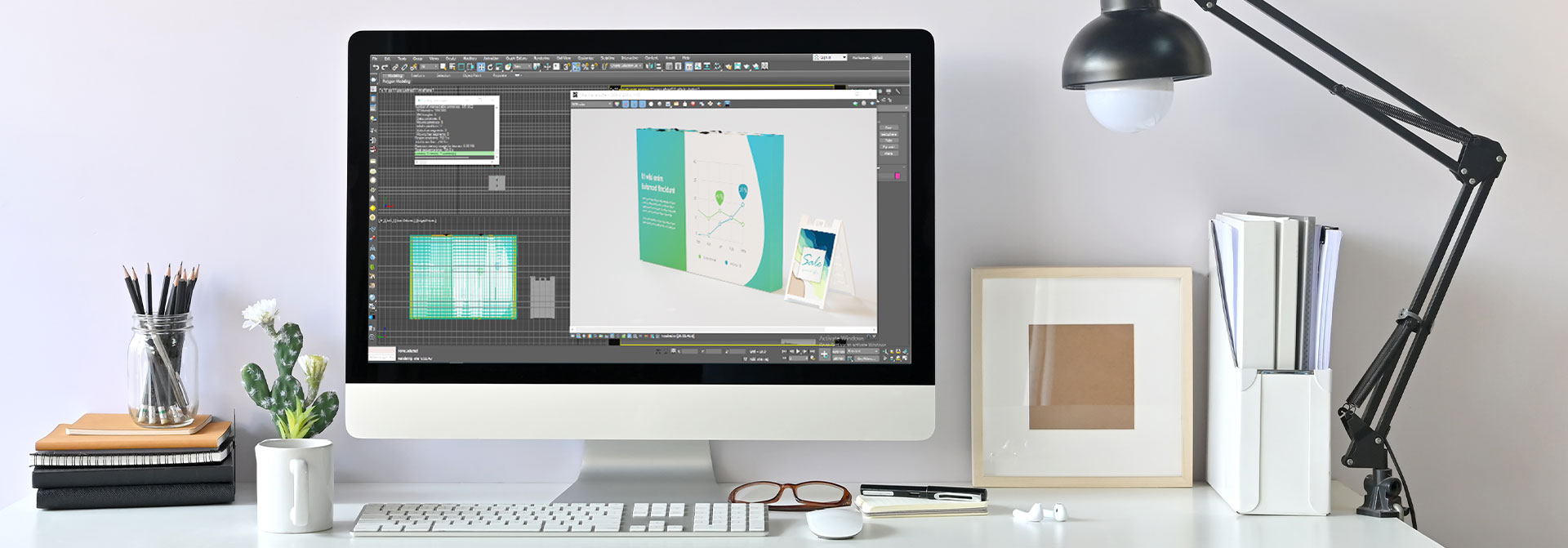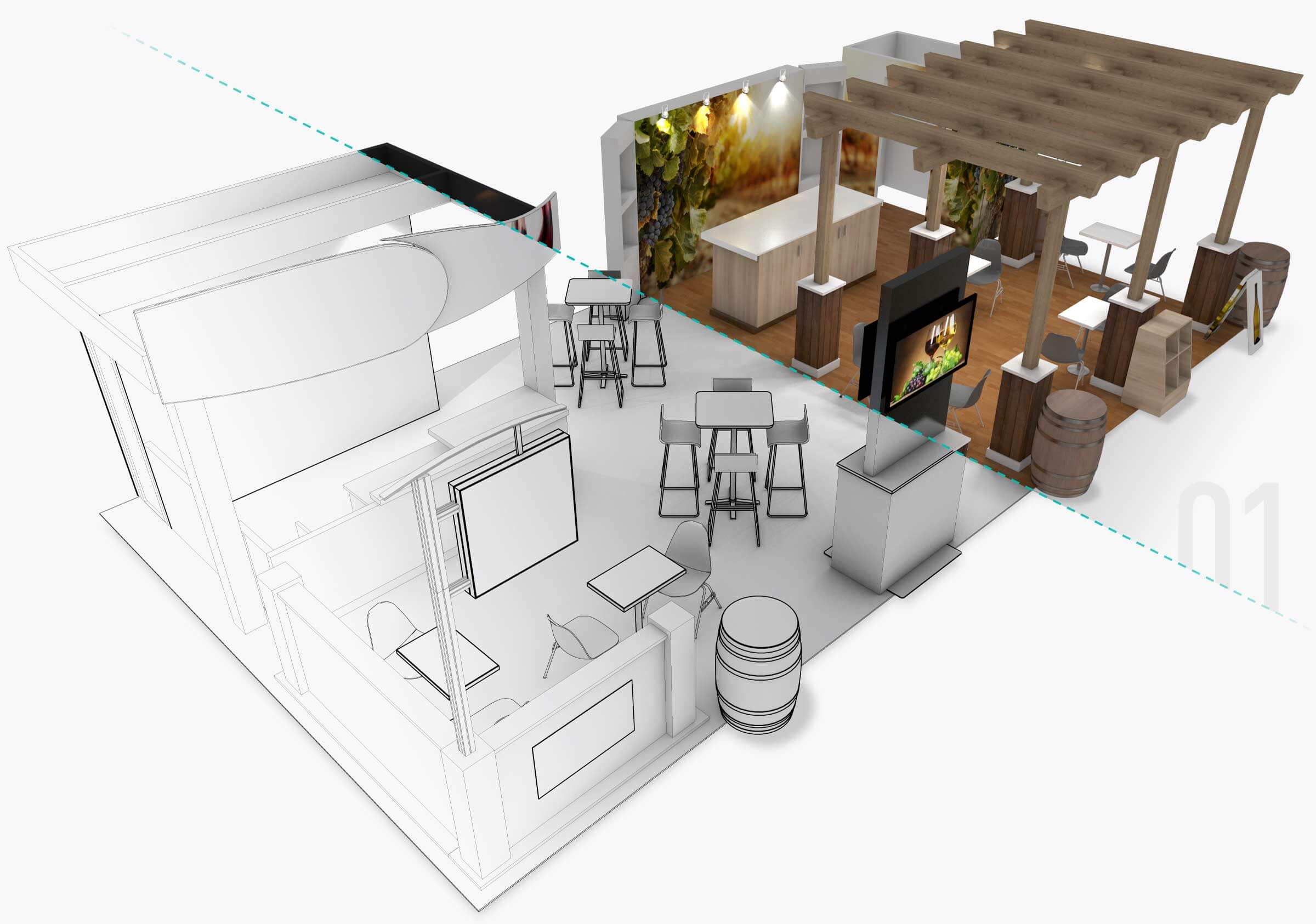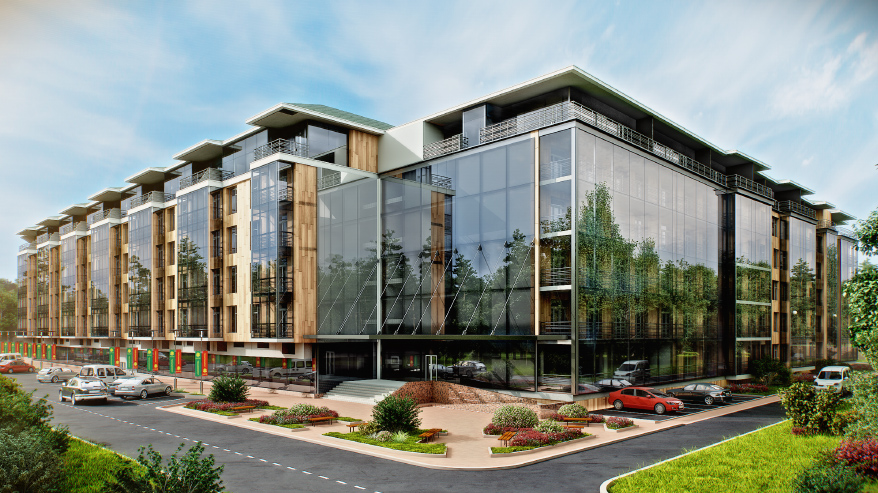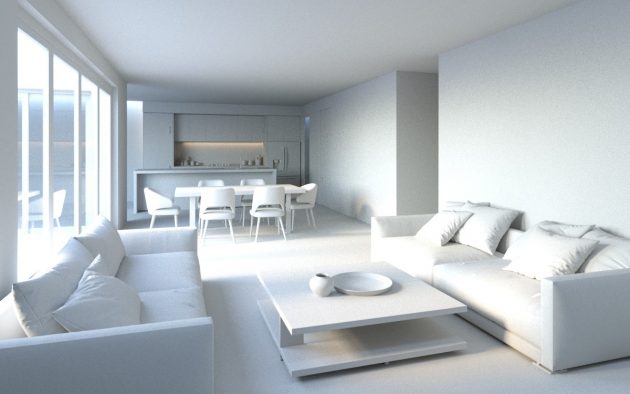Introduction
3D rendering is the process of creating a visual representation of a three-dimensional object or scene using computer software. This can include animation, modeling, and visualization in various fields such as product design, architectural visualization and animation. The process of 3D rendering can be complex, but the end result is a highly detailed and realistic image that can be used for a variety of purposes.
3D rendering is used to create visualizations of designs, allowing designers to see what the finished design will look like before it is printed or used in digital media. This can help with making design decisions and identifying potential issues. 3D rendering is also used in advertising, film and video game development, and scientific research to create highly detailed and realistic images for use in commercials, movies, video games, data visualization and simulations of physical phenomena.
Techniques and Technologies Used in 3D Rendering
The process of 3D rendering can involve a variety of techniques and technologies. Photorealistic rendering, CAD rendering and CGI rendering are few of the most common techniques used. Photorealistic rendering is a type of 3D rendering that is used to create images that are highly realistic and detailed, as if they were photographs. CAD rendering, on the other hand, is a type of 3D rendering that is used to create detailed and accurate models of designs, including the layout, design, and materials. CGI rendering is used to create computer-generated images, which can be used in animation, film, video games and other types of media.

The use of rendering software such as Autodesk 3ds Max, Maya, Blender, Cinema 4D, and others are also key technologies used in 3D rendering. Each software has its own set of features and capabilities, and the choice of software will depend on the specific needs and requirements of the project. Some of the features that are commonly found in 3D rendering software include the ability to create detailed models, apply textures and materials, and control lighting and camera angles. Some software’s are more suitable for beginners and hobbyists, while others are geared more towards professional users and large-scale projects.
Uses of 3D Rendering
3D rendering is widely used in product design, architectural visualization and animation. In architecture, 3D rendering is used to create visualizations of building designs. This allows architects and clients to see what the finished structure will look like, and it can help with making design decisions and identifying potential issues. In product design, 3D rendering is used to create detailed and accurate models of products, including the layout, design, and materials. This allows product designers to see what the finished product will look like and make any necessary changes before it goes into production.

3D rendering is also used in the film and video game industry to create highly detailed and realistic images for use in movies, video games, and other types of media. It is also used in advertising to create visualizations of products, buildings and designs that can be used in commercials, brochures and other types of marketing materials. In addition, 3D rendering is also used in scientific research to create simulations of physical phenomena, such as the movement of water or the behavior of particles in a fluid.
3D Rendering Services
3D product rendering, architectural visualization and CGI rendering are few of the services offered in 3D rendering. These services help clients to see the final product, building or design in a more realistic and accurate way, which can help with making design decisions and identifying potential issues. These services are offered by 3D rendering studios or companies that specialize in providing high-quality 3D rendering services for various industries. They use the latest techniques and technologies to create photorealistic, realistic and detailed visualizations for their clients.

3D product rendering services create highly detailed and accurate models of products, including the layout, design, and materials. These models can be used for a variety of purposes, such as product design, advertising, and film and video game development. Architectural visualization services create visualizations of building designs, including the layout, design, and materials. These visualizations can be used for a variety of purposes, such as architectural design, advertising, and film and video game development. CGI rendering services create computer-generated images, which can be used in animation, film, video games and other types of media.
Learning 3D Rendering
3D rendering is a skill that can be learned through various means such as online tutorials, courses, and workshops. There are many resources available for those who want to learn how to do 3D rendering, including online tutorials, courses, and workshops. These resources can help individuals learn the basics of 3D rendering, as well as more advanced techniques and technologies. Additionally, there are many software options available for 3D rendering, and some of them offer free trials and tutorials that can help beginners to learn the basics of 3D rendering.

Learning 3D rendering can be time-consuming, but with dedication and practice, it is possible to become proficient in the skill. There are also many online communities and forums where individuals can share their work, ask questions, and receive feedback and support from other 3D rendering enthusiasts.
Cost of 3D Rendering
The cost of 3D rendering can vary depending on the complexity of the project, the software and techniques used, and the services provided by the 3D rendering studio or company. The cost can also depend on the number of revisions and the turnaround time. However, 3D rendering can be an expensive process, but it is a worthwhile investment for those who need highly detailed and realistic visualizations for their products, buildings, designs or other purposes.

The cost of 3D rendering services offered by a studio or company can range from a few hundred dollars to several thousand dollars , depending on the complexity and length of the project. For smaller projects, such as product renders for an e-commerce website, the cost may be relatively low. However, for larger projects, such as architectural visualizations for an entire building or a film production, the cost may be significantly higher. Additionally, the cost of 3D rendering software can also vary, with some options being free or low-cost, while others can cost thousands of dollars.
It’s also worth noting that some companies, especially those that do a lot of 3D rendering work, invest in powerful render farm. A render farm is a group of computers that are networked together to render 3D animations and images. This allows companies to speed up the rendering process and complete large projects more efficiently, which can ultimately reduce costs.
Conclusion
3D rendering is a powerful tool for creating visual representations of three-dimensional objects and scenes. It has a wide range of applications, including product design, architectural visualization, and animation. With the advancement of technology, 3D rendering has become more accessible and user-friendly, and its applications are growing rapidly. The various techniques and technologies used in 3D rendering, such as photorealistic rendering, CAD rendering and CGI rendering, allow for the creation of highly detailed and realistic images. 3D rendering services, such as 3D product rendering, architectural visualization, and CGI rendering, are offered by specialized studios and companies. It is also possible to learn 3D rendering through online tutorials, courses and workshops, and software options. The cost of 3D rendering can vary, but it is a worthwhile investment for those who need realistic and detailed visualizations for their projects.

Overall, 3D rendering can be a complicated and time-consuming process, but it is also a valuable tool for creating realistic and accurate visualizations of designs, products, buildings, and other objects. Whether you’re a professional designer, architect, or just someone who wants to create 3D renders as a hobby, there are many resources available to help you learn and improve your skills. With the right tools, techniques, and knowledge, you can create high-quality 3D renders that can be used for a wide range of purposes. Whether you’re looking to create visualizations for a new product, a building design, or a film production, 3D rendering can help you bring your ideas to life in a realistic and detailed way.
FAQ:





